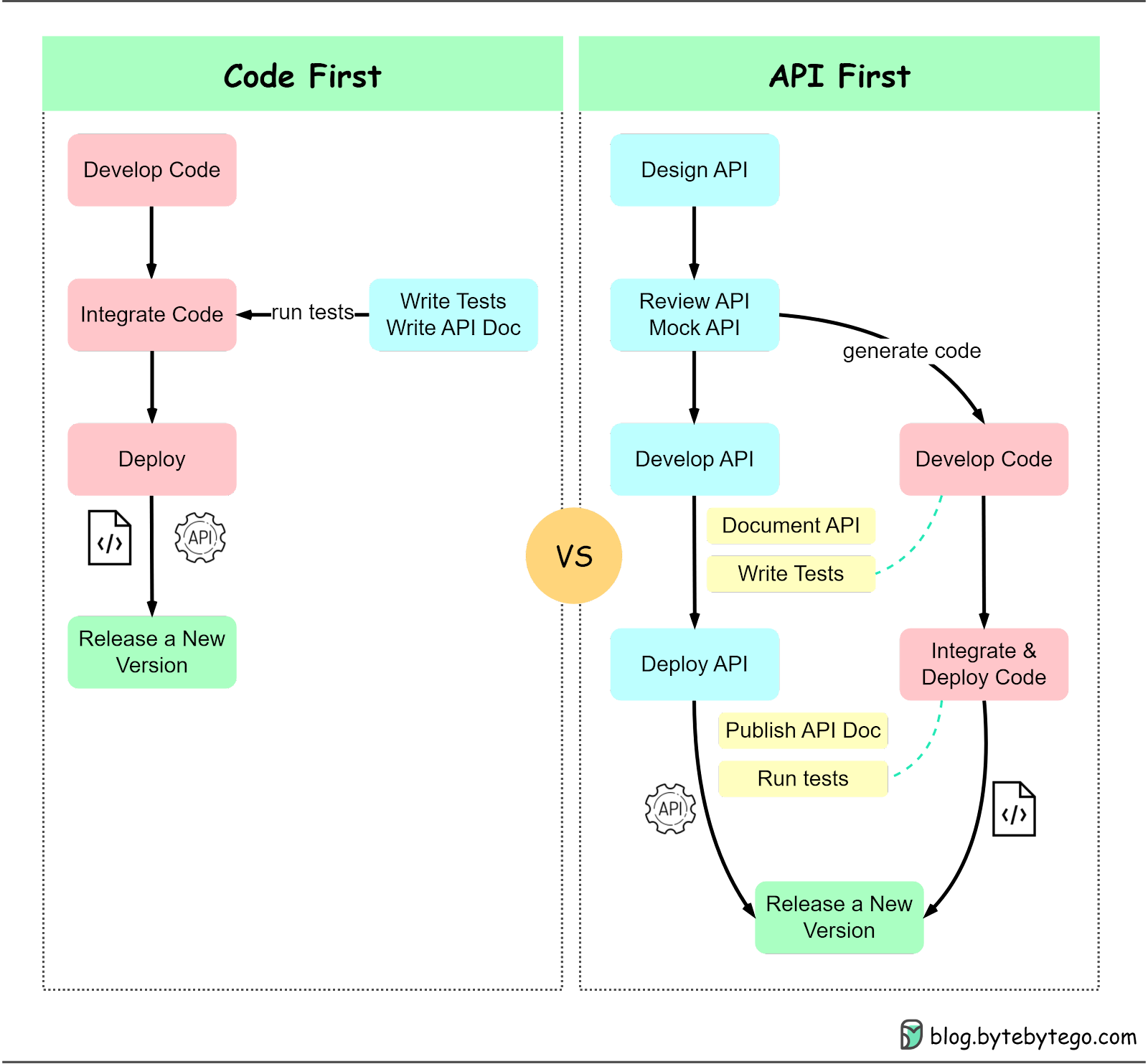# RESTful Notes
# RESTful API
RESTful API is an architectural style for developing web services that builds upon existing systems and features of HTTP.

REST is easier to archive than SOAP.
REST defines 6 architectural constraints:
- Use of a uniform interface (UI): resources should be uniquely identifiable through a single URL. only by using the underlying methods of the network protocol, such as DELETE, PUT and GET with HTTP
- Client-server based: there should be a clear delineation between the client and server. Data access, workload management and security are the server’s domain.
- Stateless operations: all client-server operations should be stateless, and any state management that is required should take place on the client, not the server.
- RESTful resource caching: all resources should allow caching unless explicitly indicated that caching is not possible.
- Layered system: REST allows you to use a layered system architecture where you deploy the APIs on server A, and store data on server B and authenticate requests in Server C. A client cannot ordinarily tell whether it is connected directly to the end server or an intermediary along the way.
- Code on demand: Most of the time, a server will send back static representations of resources in the form of XML or JSON. However, when necessary, servers can send executable code to the client.
# Definations
# Idempotence
In computer science, the term idempotent is used more comprehensively to describe an operation that will produce the same results if executed once or multiple times. This may have a different meaning depending on the context in which it is applied. In the case of methods or subroutine calls with side effects, for instance, it means that the modified state remains the same after the first call
# Safety
Some methods (for example, HEAD, GET, OPTIONS and TRACE) are defined as safe, which means they are intended only for information retrieval and should not change the state of the server. In other words, they should not have side effects, beyond relatively harmless effects such as logging, caching, the serving of banner advertisements or incrementing a web counter. Making arbitrary GET requests without regard to the context of the application's state should therefore be considered safe.
HEAD, GET, OPTIONS and TRACE have no side effects on server
# Tips for API Design

# Richardson Maturity Model
Richardson Maturity Model is a measure of how RESTful an API definition is. It defines 4 levels
# Level 0 😱 - swamp of BOX:
- has 1 entry point (URI) and 1 method (POST)
- all APIs would be POST to an URL.
# Level 1 😜 - resources:
- uses differents URLs to distinguish API resources
- be still typically only one me method (POST) of interaction
# Level 2 😍 - HTTP Verbs:
- uses proptocol properties (HTTP verbs) to define nature of the API
- uses GET for a read, POST for a write, PUT for updating, DELETE ...
- uses standard responses code (
200 OK,202 ACCEPTED) to describe the result - most REST API implementations are at this level
# Level 3 🤘 - hypermedia controls:
- the most RESTful API - uses Hypertext As The Engine Of Application State (HATEOAS) to allow clients to deal with discovering the resources and the identifiers.
Example: we have a request GET /hotels/xyz and the response looks like:
{
"city": "Saigon",
"display_name": "New World",
"star_rating": 4,
"links": [
{
"href": "xyz/book",
"rel": "book",
"type": "POST"
},
{
"href": "xyz/rooms",
"rel": "rooms",
"type": "GET"
}
]
}
Thus, the client can discover the related API and do the operations.
# Quick Tips
# Wrapped Response
{
"code": 200,
"status": "...",
"data": ".."
}
# Sort
.../users?sort=last_name|first_name|-hire_date
-sort in descending order
# Pagination
# Filter
.../users?filter="name::todd|city::denver|title::grand poobah”
See odata (opens new window) to get more examples.
# Versioning Support
What version is returned if no version provided? "Best match". Should return the oldest supported version of the representation.
# Date/Time handling
Service should store, process, cache, etc such timestamps in UTC or GTM time.
It is recommended that ISO 8601 (opens new window) be used for all dates represented in REST Service body content (both requests & responses)
Most of languages support convert datetime to ISO
let today = new Date('05 October 2011 14:48 UTC')
console.log(today.toISOString()) // Returns 2011-10-05T14:48:00.000Z
# Authentication
OAuth2 (opens new window) is highly recommendation.
All authentication should use SSL. OAuth2 requires authorization server & access token credentials to use TLS.
# References
# Standard HTTP status codes
Full list of static code (opens new window)
Here is top 10 common usage of status codes:
| Status Code | Summary |
|---|---|
| 200 | OK |
| 201 (opens new window) | Created |
| 204 (opens new window) | No content |
| 304 (opens new window) | Not Modified |
| 400 (opens new window) | Bad Request |
| 401 (opens new window) | Unauthorized |
| 403 (opens new window) | Forbidden |
| 404 (opens new window) | Not found |
| 409 (opens new window) | Conflict |
| 500 (opens new window) | Internal Server Error |
# API first vs Code First

"API First" offers several advantages:
- Improved system integration. “API First” encourages developers to carefully consider system interactions from the project’s outset, reducing the need for ongoing modifications during development.
- Enhanced collaboration and quality. APIs serve as a shared specification within the organization, allowing developers, testers, and DevOps to work independently. Agreeing on APIs at the project’s beginning helps eliminate uncertainties and boost software quality.
- Increased scalability. With defined interfaces for each service, scaling becomes more manageable by spinning up new instances and adjusting load balancer settings.
Read more Mastering the Art of API Design (opens new window)
# Others
https://blog.logrocket.com/introduction-to-rpc-using-go-and-node/
https://serhatgiydiren.com/distributed-systems-network-communication-remote-procedure-calls/